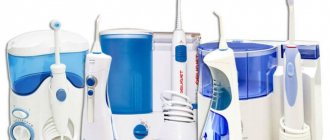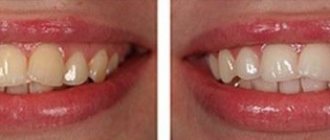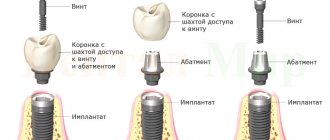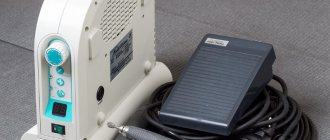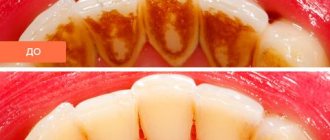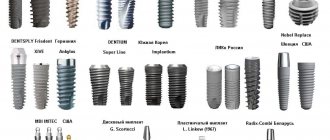What do we do every morning while getting ready for work, school, and other upcoming errands? Of course, starting each new day, we make sure to brush our teeth.
Such a daily ritual can be difficult to force a small child to perform, but an adult considers daily brushing of teeth to be something natural and obligatory, because oral care is very important and vital for every person.
People use a huge arsenal of devices and cleaning products to care for their oral cavity: brushes, the range of which is now quite large, pastes of different functions, tooth powders, gels, mouth rinses, oral sprays, brushes, dental floss. From this entire list, we will dwell in more detail on such a useful product as a toothpick.
Who invented toothpicks
A toothpick is a small, pointed device designed to painlessly remove food debris stuck between the teeth and gums.
Today, toothpicks can be found in every catering establishment, in office cafeterias, as well as in the kitchen at home. Based on archaeological excavations, scientists have concluded that people used these objects in the prehistoric period - about 1 million years ago. Then they were made from bird beaks, fish bones, etc.
In the 8th century, dental sticks began to be made from bird feathers, mainly chicken or goose raw materials. And only from the middle of the 19th century did wood become the main material for their production. The first toothpick-making machine was patented in 1872 by J.P. Cooley and Silas Noblet. At that time, the size of the product was 2x2x65 mm.
Photo: Aviora individually wrapped toothpicks
Workspace organization
To accommodate a production workshop, you will need a room with an area of 50-60 m² (requirements regarding the dimensions of the room can be obtained from the equipment supplier). There must be industrial ventilation and air conditioning systems, heating, power supply, water supply and sanitation, a complex for heating water, fire-fighting equipment, and lighting that meets labor safety standards.
It is also necessary to provide a site for unloading logs, 20-30 m² each for warehouses for raw materials and finished products, at least 20 m² for a room for drying and tracking wooden plates, a place for installing an industrial drying chamber, sanitary and office parts. The rental price depends on the region and location of the building. On average it is 15-30 thousand rubles.
Benefits and harms
The advantage of a toothpick is its convenience in public places where using a toothbrush is not possible. This device is especially important for people who have large gaps between their teeth, where food debris accumulates. Dental sticks also help remove plaque that has formed in the space between teeth.
The possible disadvantage of toothpicks is due to two factors: their direct use and the mistakes made during this process. Provided your teeth are healthy, you can remove food particles from your mouth by regular rinsing. Particles getting stuck in or between teeth indicate problems. Which can only be resolved by contacting a dentist. Using a toothpick in this case will only complicate the situation.
Health risks include:
- Damage to gums. The accumulation of food in periodontal pockets and interdental spaces indicates the presence of periodontitis - an inflammatory process that provokes tooth mobility with subsequent loss. A toothpick does not completely remove food debris, but only aggravates inflammation, which over time takes on an aggressive form. Lack of medical attention for the accumulation of food particles is a common cause of root caries. This pathology often leads to tooth extraction. In cases where treatment is possible, it is a rather complex and expensive process.
- Spread of infection. Even with the use of disposable toothpicks, it is impossible to prevent the development of stomatitis and gum inflammation. During the cleaning process, many pathogenic microorganisms settle on this device. Their combination with bleeding, often resulting from accidental damage to the gums, leads to the occurrence and development of stomatitis.
- Damage to the gums by a splinter. Even on polished products, as a result of pressure and exposure to saliva, the pointed tips split into fibers and often become a thorn in the gums. Subsequently, such a problem often develops into inflammation. The tips of plastic toothpicks dig into the gum tissue, causing a purulent inflammatory process. Moreover, a part of a plastic toothpick stuck at the edge of the gum leads to a wedge-shaped defect and caries.
In some cases, dental sticks do not reach stuck food particles, but, on the contrary, bury them deeper and deeper.
Paperwork
Registration of a toothpick production enterprise follows a standard algorithm. The preferred form of doing business is LLC, since representatives of large chains are reluctant to cooperate with them. The taxation system is simplified. It will be necessary to obtain permits from the Fire Inspectorate and SES.
- OKPD code 2 20.42.18.190 (OKP 91 5829) – “Other oral and dental hygiene products.”
- HS code 3306900000
According to the Decree of the Government of the Russian Federation dated December 1, 2009 No. 982, the manufacturer must confirm the quality of the product by issuing a Declaration of Conformity of the Customs Union. However, difficulties may arise at this stage, since today there is no specific GOST regulating the quality of toothpicks. According to OKPD codes 2 20.42.18.190, products are subject to verification for compliance using GOST 32117-2013, however, it only regulates the order of label design, but not the quality of toothpicks. Therefore, certification bodies may well refuse to issue the relevant documents. This is not critical for business development - to conduct business, it is enough to accept the Declaration only for compliance with GOST 32117-2013 (Clause 3.6, 3.7).
Types of toothpicks and their features
Modern dental sticks are classified according to several indicators: materials of manufacture, sizes, additional functions, etc. Also, these products can be either disposable or reusable. Sharpened on one or both sides.
By material
Depending on the material of manufacture, dental sticks can be:
- wooden - made from birch, bamboo and other wood species, most often have two pointed ends;
- plastic (plastic) – characterized by the possibility of reusable use;
- silicone – have a flexible base that allows you to clean the space between the teeth without causing harm to the gum tissue;
- titanium - they are strong and durable, but at the same time require the most careful handling.
By color
Today, the range of toothpicks is characterized by a variety of shades. They can be: white, black, green, pink, multi-colored, and also imitating the color of natural wood.
By the presence of flavoring
Manufacturers offer both flavored toothpicks (mint, menthol, strawberry, etc.) and regular ones (unflavored).
Special impregnations of dental sticks not only provide fresh breath, but also perform a number of different functions, for example:
- normalization of intestinal function;
- antiseptic effect;
- saturation of gum tissue with vitamins.
The taste of the products can be as follows: coconut, lemon, green tea, kiwi, wild berries, chocolate, menthol, etc.
By age criterion
Toothpicks are produced not only for adults, but also for children. Children's products can be purchased both in pharmacies and in children's stores. The products are sold in packages along with instructions for use, transfer stickers, and a toy designer.
Additional items
Toothpicks with brushes and dental floss allow for more thorough cleaning between teeth, eliminating food particles and bacterial plaque.
Toothpicks with nicotine
Nicotine dental sticks are used as hygiene products, to alleviate the condition when quitting nicotine and in places where smoking is strictly prohibited.
Production
The raw material for the production of toothpicks is birch wood, cut into pieces of approximately the same size. The sawn tree is kept in a vat of hot water for 18 hours, after which the bark is removed and then sanded.
The steamed, processed wood is fed to a peeling machine, where veneer is made from it. Then, on another machine, the veneer is cut into plates 35 centimeters long, 6 centimeters wide, and 2.2 millimeters thick. After cutting, the plates are dried: the material is loaded into an industrial dryer and remains there for several hours.
When drying is complete, the tree is left to rest for two days. The dried plates are cut into thin strips on a milling machine. If the wood has been dried well, the straw will be smooth and even. If not completely dried, this will significantly affect the quality of the product.
The resulting straw is sent to the next machine, where it is evenly cut into sticks of the required length. The cut toothpicks are immersed in a grinding machine, where they are pressed with a press and polished by friction against each other for two hours. After grinding, the material goes to a sorting sieve, where broken toothpicks are rejected.
Then comes the turn of the sharpening machine, on which each toothpick acquires sharp tips. Sharp toothpicks are sent along a conveyor to a machine that stacks them and packs them into plastic boxes.
What to do if a toothpick gets stuck in your teeth
It is not recommended to try to remove a dental stick stuck in the interdental space yourself, since such manipulations will only worsen the situation. In this case, you must immediately make an appointment with a dentist, who will help you remove the toothpick from your tooth.
Promotion of goods on the market
The success of toothpick production is based on the presence of regular customers who purchase the product in large quantities. It is not difficult to find relevant companies in the region and send commercial proposals to their management. You should also not neglect advertising in industry directories, advertisements on wholesale trade sites, and in specialized media.
Hotels and restaurants may be interested in toothpicks with a logo or others, for example, in the form of flavored tips. Make sure that representatives of the segment know that they can order such products from you.
Over time, the assortment can be expanded by producing plastic toothpicks (for this you will have to buy a separate line) or skewers for kebabs, decor for decorating dishes made from the same wood.
Which is better: toothpick or dental floss?
Toothpicks are convenient for getting rid of visible food debris, for example, meat fibers. This product can be used discreetly without leaving the table, turning away slightly or covering yourself with your hand. But their disadvantage is the high risk of damage to gum tissue and the inability to perform high-quality cleaning of gums from plaque.
Using dental floss is much safer; it is almost impossible to damage the enamel and gums. Proper use of this device allows you to effectively clean the interdental space. However, dental floss cannot be applied directly at the table. For manipulations related to cleaning, you need to go to the bathroom or another room.
Video: How toothpicks are made at the factory
Based on this, we can conclude: toothpicks are most suitable for situations where you need to quickly remove large particles of food. As for dental floss, its use is recommended daily in the evening to clean hard-to-reach areas of the dentition.
Application
In addition to their intended purpose, toothpicks are used in cooking to hold together rolls, canapés and similar dishes. Also used as a tool in latte art and making dough jewelry.
Toothpicks are also used to make a rhinestick, a noise-making musical instrument.
Modern companies even create their own style out of toothpicks, making them of unusual shapes. Toothpicks are also flavored with mint, cinnamon or clove oil, which gives them not only a pleasant smell, but also an antiseptic effect.
